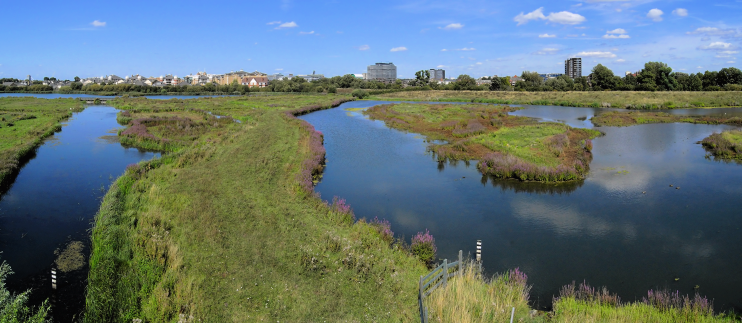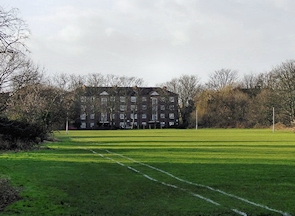Barn Elms
Barn Elms, Richmond upon Thames
The eastern part of the Castelnau (Barnes) peninsula

Barn Elms was originally the manor house of Barnes and was for centuries the property of the dean and chapter of St Paul’s Cathedral. Elizabeth I bought the lease in 1579 for Sir Francis Walsingham, as a reward for services rendered to the Crown, and she is recorded as visiting him there on three occasions.
Perhaps planted as early as the 1680s, a London plane at Barn Elms is now said to be the capital’s oldest and largest specimen of the species. When last measured, ‘Barney’ was 115 feet tall and 27 feet in girth. The tree’s location is marked with a big pink pin on the map below.
In the early 18th century the publisher Jacob Tonson lived at a house on the Barn Elms estate. He was secretary of an elite political society called the Kit-Cat Club and provided a purpose-built meeting place for its members here.
The home farm where William Cobbett practised experimental agriculture in the late 1820s disappeared under Barn Elms reservoirs in the 1890s. Cobbett probably wrote much of his campaigning treatise Rural Rides while based there.
From 1894 until 1939 the Ranelagh Club was situated at Barn Elms, providing sporting facilities comparable with those at Hurlingham and borrowing its name from an old place of amusement at what is now part of the grounds of Chelsea Royal Hospital. The clubhouse was damaged by fire in 1954 and subsequently demolished.
Barn Elms’ Victorian reservoirs, which became redundant after the inauguration of the Thames Water ring main in the mid-1990s, have been spectacularly transformed into the London Wetland Centre, partly funded by the construction of luxury housing nearby. The £16-million project was the brainchild of the naturalist and artist Sir Peter Scott, who wanted to bring the sight of rare ducks, geese and swans to city dwellers. Much of the reserve is devoted to different wildlife habitats and there are six viewing hides, including the three-storey Peacock Tower, from which the photograph above was taken.* The indoor ‘discovery centre’ has interactive exhibits, primarily for children, and there’s an outdoor adventure playground and a café.

South of the wetland centre, 100 acres of former GLC playing fields and other sports facilities are now divided between two councils: Richmond to the west and Wandsworth to the east. The fields are home to several sports clubs, including Barnes RFC, claimed by some to be the world’s first and oldest club in any code of football, and Stonewall FC, ‘the world’s most successful gay football club’.
Wandsworth also runs the Barn Elms boathouse (on the stretch of the Thames called Barn Elms Reach, opposite Fulham FC’s Craven Cottage), which has full time coaching staff and an indoor rowing tank. South Bank sailing club is based next door to the boathouse.
In 2010 Thames Water proposed to construct the main West London drive shaft of the Tideway tunnel beneath playing fields at Barn Elms. Following well organised local resistance, a site at Carnwath Road on the Fulham riverside was preferred, to the dismay of residents there instead. A subsidiary shaft will be sunk at Barn Elms, which should be completed by late 2019.
Samuel Pepys’ diary mentions several boat trips up the Thames as far as Barn Elms, where he would disembark for a stroll and then return to London. In another diary entry Pepys reports a fatal duel “all about my Lady Shrewsbury, who is a whore … [fought] in a close near Barne-Elmes.”
